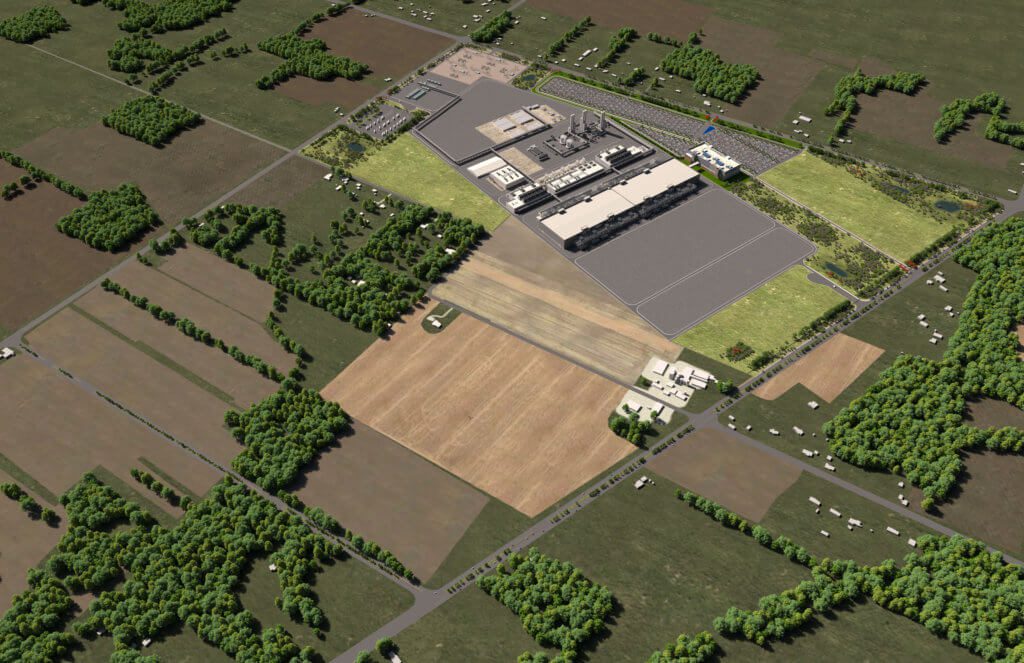As I am sure you have all heard, Intel Corporation announced January 21st that it will build one of the largest microchip plants in the world in New Albany, Licking County. The plant will be a $20 billion investment – the largest private investment in Ohio’s history. Intel will create 3,000 direct jobs paying an average of $135,000 a year. Approximately 7,000 construction workers will build the facility. This monumental project has the ability to forever improve the trajectory of Ohio’s economy.
The scale of this project is hard to fathom. Let me indulge in a little geeky economic development talk for some perspective and then bring it back to what it could mean for our region.
For decades, Ohio has been one of the top manufacturing states in the nation (3rd largest by employment). The auto industry historically has been one of the biggest drivers of manufacturing. GM, Ford, and Chrysler (now Stellantis) still have a few large plants in Ohio. Honda – which first located a motorcycle plant in Ohio in 1979 with 64 employees – steadily grew in Ohio to have multiple large plants. Today, Honda is the largest manufacturing employer in Ohio; Several sources put Honda’s employment at 14,000 – 16,000 in Ohio. When you count the supplier network Honda uses for just-in-time delivery to its assembly, engine and transmission plants in Ohio, jobs tied to Honda grow exponentially. The project just announced by Intel is “Honda-like” but for a brand new industry in our state with astronomical growth prospects.

Intel already has 140 suppliers in Ohio, but a bigger network of high-tech goods and services will be needed. Intel CEO Pat Gelsinger has been quoted as saying these chip fabrication campuses are like small cities. The first two fabrication facilities (think 30 OSU football fields under roof) could be just the beginning. Intel is reported to have acquired over 900 acres and have options that would put their total footprint at over 1,700 acres, or almost 3 square miles. When Intel announced their project, the company referenced what their microchip plant did for Chandler, Arizona, when it was built 40 years ago (Intel’s last major domestic greenfield manufacturing project). Today the Chandler plant has over 12,000 employees. A total of 60,000 jobs in the Chandler region are tied Intel. Mr. Gelsinger said the New Albany site could ultimately house eight chip fabrication facilities. Welcome to the Silicon Heartland!
Naturally, as Ohioans, our chests are swelling with pride as our state beat out almost 40 other states for this project. Naturally, we may also have a twinge of envy of New Albany. The OhioSE region also has the potential to be direct beneficiaries of the Intel project. Intel said 30 to 40 additional companies might locate to supply their plant. Some will certainly co-locate on or near the Intel campus. But if we look at what happened with Honda, suppliers often did not locate immediately next to the assembly plants. Typically the competition for labor was a concern for suppliers as well as the wage competition created by a massive premiere employer. In Honda’s case, suppliers tended to locate satellite facilities within an hour radius of the assembly plants. The OhioSE region should be well positioned geographically to compete for supplier locations.
I say “compete” because that’s exactly how it works. Companies have multiple options with many developers and communities trying to win their investment. The site selection process is usually a process of eliminating options that don’t meet project parameters, or will take too long to develop, or are too risky, or too expensive. Having pad-ready sites with all utilities and due diligence studies done – or even better: modern available buildings – are prerequisites for the competition. So is an available and skilled work force and training facilities capable of customizing training. Having the type of community that technical workers will want to move to is also critical. So, quality available housing, good schools, recreation, amenities, safety, and an appealing sense of place are all important.
It is too soon to say what suppliers may want to follow Intel, or what their site search parameters will be. Yet the magnitude of the opportunity demands our action. The time is now for communities who want to get in the game. It can be easy to talk yourself out of the hard work of prepping your community or site to win a future technology company thinking “it will never happen.” A year ago that’s what Silicon Valley said about Ohio. Not anymore.




